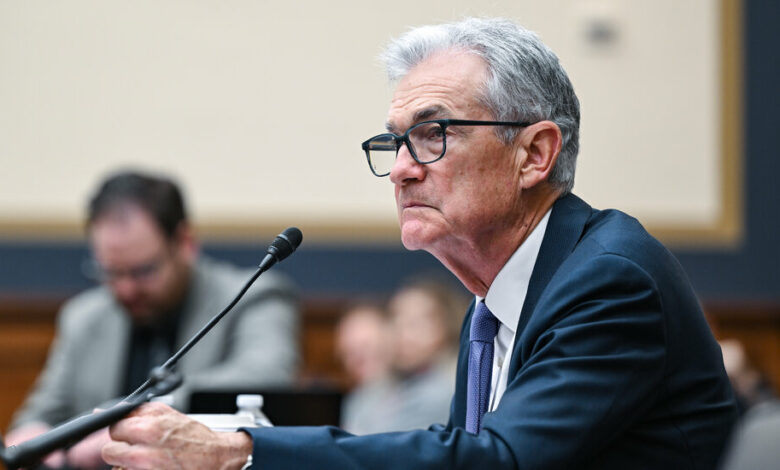Powell welcomes cooling inflation but wants ‘more good data’ before rate cut

Federal Reserve Chairman Jerome H. Powell said Tuesday that recent inflation figures have given the central bank greater confidence that price increases are returning to normal and that further progress in that direction could pave the way for the central bank to cut interest rates.
“The Committee has stated that we do not expect it to be appropriate to lower the target for the federal funds rate until we have gained greater confidence that inflation is moving toward 2 percent on a sustained basis,” Mr. Powell said.
He added that data from earlier this year did not provide such confidence, but that recent inflation figures “have shown modest further progress, and more good data would reinforce our confidence that inflation is moving towards 2 percent on a sustained basis.”
Mr. Powell is due to testify before the Senate Banking Committee on Tuesday. He spoke about the speeches he had prepared.
While Powell avoided naming a specific month in which the Fed might cut rates, he also did little to calm growing expectations that a reduction could come in September. Fed officials are scheduled to meet in late July, but few, if any, economists expect a move this early.
The chairman’s testimony before Congress comes at a delicate time for the central bank. Fed officials are trying to figure out when to start cutting interest rates, which they’ve kept at their highest levels in decades for about a year now. But as they weigh that choice, they must strike a careful balance: They want to keep borrowing costs high long enough to cool the economy and completely eliminate rapid inflation, but they also want to avoid overdoing it, which could cause the economy to crash too much and trigger a recession.
While Fed officials focused on curbing inflation in 2022 and much of 2023, even though it came at an economic cost, price increases have now cooled enough to clearly reflect the trade-off between curbing inflation and weakening the labor market.
After jumping to 9.1 percent in 2022, consumer price index inflation is expected to ease to 3.1 percent in a June reading released on Thursday. Importantly, prices are now rising very slowly on a monthly basis, a sign that inflation is coming under control.
“After no progress toward our 2 percent inflation target early this year, the latest monthly readings show modest further progress,” Powell said.
The inflation slowdown has come partly as supply chains have recovered from pandemic-related disruptions, allowing prices of goods to fall. But the progress has also come from a continued cooling in the broader economy.
That moderation in economic growth can be traced to Fed policy. Starting in March 2022, central bankers quickly raised interest rates to their current 5.3 percent before leaving them there. That has made it expensive to borrow money to expand a business, buy a car or purchase a home, dampening economic demand.
The labor market is also slowing after years of surprising strength. The number of job openings has gradually declined from a peak following pandemic lockdowns, and the unemployment rate has risen steadily. Wage growth is also slowing, a sign that employers are no longer paying as much to compete for new workers.
“In the labor market, a broad range of indicators suggest that conditions have returned roughly to where they were on the eve of the pandemic: strong, but not overheated,” Powell said.
Overall, Mr. Powell’s comments painted a picture of an economy gradually moving toward the Fed’s goals, potentially enabling the gentle pullback that central bankers have been hoping to achieve. While it’s rare for the Fed to crush serious inflation without triggering a recession, officials are optimistic that they can pull it off in this episode.
Mr. Powell will answer questions from lawmakers on Tuesday and will testify before the House Financial Services Committee on Wednesday.




